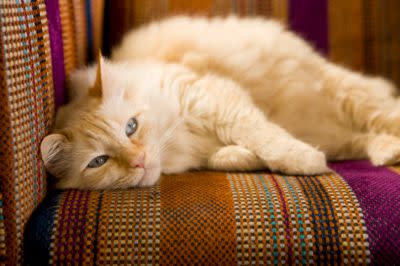Dissecting the Many Myths About Cats

Cats are sly, mysterious creatures, with a secretive nature that has inspired a number of myths and old wives tales through the years. But do any of them actually hold any water? And how did some of these crazy stories get started? Let's find out, by taking a look at some of the most propagated myths about cats.
Cats always land on their feet. Because they don't have a collarbone, cats are incredibly bendy. And the bones in their backbone are remarkably flexible, allowing them to rotate and twist their body in miraculous ways. But that doesn't mean they're destined to land on their feet. And they can still fall long distances and break their bones. Keep your cat safe by securing windows and limiting her access to balconies or dangerous heights.
Cats have nine lives. We've already established the fact that cats are cunning creatures. They're stealthy, and they've got a knack for getting themselves out of tight situations - sometimes by the hair of their whiskers. It's a good bet that it's this death-defying ability that led to this particular myth.
Milk is good for cats. I'm not sure where this one started, but cats and a full saucer of the sweet stuff apparently seem to go hand-in-hand. The only problem is that cow's milk doesn't exactly offer cats any nutritional value. And many cats develop lactose intolerance as they age - so giving your kitty a bowl of milk can actually cause her some unpleasant digestive problems. Next time, skip the saucer, and give her some of these instead.
All calico cats are female. I grew up with a calico, and I actually thought this one was true - until I did a little research and discovered I was wrong. It actually has to do with a genetic anomaly. Female cats carry two X chromosomes, while males carry an XY pair. For a cat to be calico, it needs the XX set, which means - most of the time - they're female. But sometimes a genetic mutation can add extra Y - and an XXY set means a male cat. These rarities are called Klinefelter cats, and they are usually sterile.
Cats hate water. It's true that most cats don't love taking a dip - but you could say that about a lot of dogs too. It really comes down to the individual cat, and some breeds - the Bengal and the Turkish Van - are actually known for their fondness for the wet stuff. It's a good bet your cat will display, at the very least, a mild curiosity over water - and many adore a running fountain. So why not turn on the faucet and test it out?
Many more cat myths run amok in our society. Know the origins of any of them or want to dispute a few? Share your knowledge with other readers by leaving a comment below.
